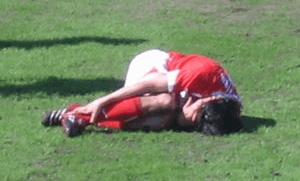
Anyone who has ever followed a football team will know the agony of a player getting injured.
It feels as though it always happens at the worst possible moment, normally when they have been away on international duty so you can get annoyed at them picking up an injury in a pointless friendly or the like. Injuries have befallen even the best players in the game, with some seeing their careers come to an end because of an injury.
But how do players get injured? Is there anyway to avoid an injury? What are the most common injuries for professional footballers? Here we’ll try to answer some of these questions and have a look at some high profile examples of players who have been injured during the height of their career.
It’s almost impossible for this list to be comprehensive, but hopefully it will give you a better understanding of the ways injuries can change the course of a season or a career.
How Do Footballers Get Injured?
There are a number of ways that players can get injured, with some being more obvious than others.
We’ll discuss these more obvious ones here as well as touch on the less obvious, freak accidents that happen occasionally.
Tackles
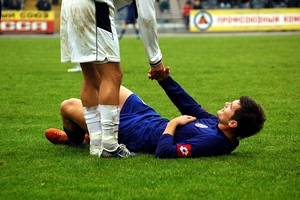 Without question the most obvious way that footballers can get injured is in a tackle with another player during a match. In the vast majority of cases these injuries are not intended by the perpetrator, yet they can do serious damager to the person on the other end of them.
Without question the most obvious way that footballers can get injured is in a tackle with another player during a match. In the vast majority of cases these injuries are not intended by the perpetrator, yet they can do serious damager to the person on the other end of them.
A lot is made of footballers from previous generations having to put up with a lot more bad tackles than modern day players and ‘just getting on with it’. Yet the truth is that professional footballers nowadays are athletes comparable to those sportsmen and women that take part in the Olympics.
Gone are the days of having steak and chips before a game and getting wiped with the magic sponge to feel better after a tough tackle. Equally sports scientists have become much more adapt at spotting injuries now that might have been allowed to go unnoticed in the past. A muscle injury, for example, would have been ‘run off’ by the previous generation who would unwittingly do more damage to themselves.
A crunching tackle nowadays could do some serious damage and that is why referees are instructed to clamp down on them. Sliding in from behind will do different damage to a player than sliding in from the side, for example. Even just a clip of the heels could result in a player pulling a muscle, such is the speed that they run at in the modern game.
Fatigue
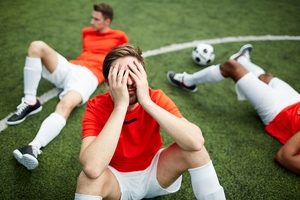 Also known as ‘general wear and tear’, footballers demand a lot from their bodies.
Also known as ‘general wear and tear’, footballers demand a lot from their bodies.
As well as playing football perhaps two times a week and sometimes with little rest between games, players also train hard and do work in the gym that puts their muscles under stress and strain.
This can lead to a gradual build-up of problems and it has been known for professionals to force themselves to play even when not fit for fear of being dropped by the manager.
Falling
 This way of picking up an injury is more common in goalkeepers, yet any player could injure themselves falling.
This way of picking up an injury is more common in goalkeepers, yet any player could injure themselves falling.
‘Keepers obviously have to jump around in order to make saves and stop shots, but players also jump for headers and the like.
It is not uncommon for players to land awkwardly after jumping for a ball or to make a save, doing damage to bone or limb.
Can Injuries Be Avoided?
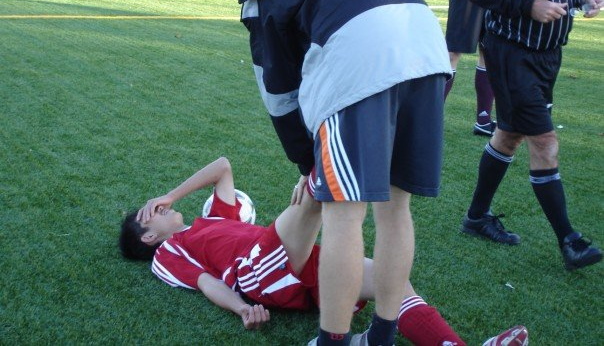
It stands to reason that if injuries can do a player damage then they should try to avoid injuries as much as possible. This is easier said than done, of course. A player could choose not to go in for a tackle, for example, yet footballers are competitive people and this would go against their nature. It may also be spotted by the crowd who might disapprove or the manager who could decide not to play them in the future.
There is around a 34% injury rate with footballers, so decreasing that risk is important. A lot of the decreasing of the risk comes in training, with things like proprioceptive training aiding you with your body’s alignment and balance. You can also strap your limbs, reducing the strain put on them during a game. Strengthening work can also help in a big way. If a player knows that they’re susceptible to a hamstring injury, for example, then strengthening the muscle and the other muscles around the hamstring will help to reduce the risk of over-using it.
Perhaps the most obvious way of helping yourself to avoid injury is warming up. If you ever go to watch a professional game then you’ll see the players being put through drills by the coaching staff before the match starts. This is to get their bodies nice and warm and to give themselves the best possible opportunity of getting a muscular injury. At the very top level players will have personalised warm-ups too, as the exercises that work for one player won’t necessarily work for another.
Common Footballing Injuries
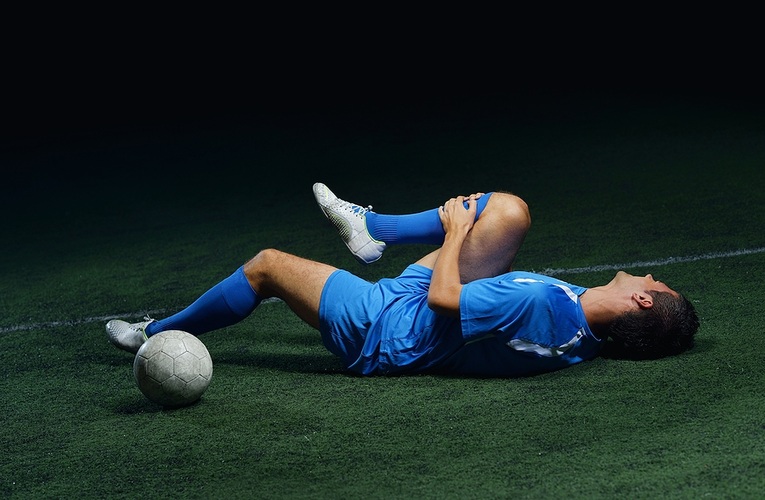
There are obviously some freak injuries that can’t be helped or avoided, yet the majority of footballers at all levels of the game tend to suffer from the same injuries. This is inevitable for a game that can only be played in a certain way. Here’s a look at some of the most common:
Hamstring Strain
Hamstrings are asked to do a lot of work by footballers. At times they can be worked beyond their limit and the hamstring muscle can tear. This tear is most commonly referred to as a strain and tends to be broken down into first, second and third degree strains depending on their severity. At the top level of the game hamstring injuries account for around 40% of all injuries and are even more likely to occur if a player hasn’t warmed up correctly.
Sprained Ankle
Players, especially tricky attacking ones, will twist and turn and move themselves around in order to bamboozle opposition defences. This trickery can result in an ankle being sprained, not least because the moves happen at such a pace that the legs can’t always keep up with what the head is asking them to do. A ‘sprained ankle’ typically tends to mean soft tissue damage, mainly of the ligaments, around the ankle itself.
Knee Cartilage Tear
This injury is not as common as you might think, typically accounting for around 12% of top level injuries. It perhaps just feels like it happens quite often because it can be quite serious and can reduce a player’s playing time. The knee has two menisci within it that are made up of strong fibrocartilage. If the knee bends or twists incorrectly whilst bearing the weight of the upper body this cartilage can tear, especially if it gets caught between the thigh and shin bones. A seriously knee injury can end a player’s career.
Hernias
Footballers ask their bodies to do a lot in general, but they ask a huge amount of their groins. The groin region tends to lead the movement of a player, with hips twisting and turn and legs running. Kicking, sprinting and stretching are all activities that put pressure on the pelvic region. If a player gets a hernia then they might be able to carry on playing to begin with but the injury will start to take its toll until they can no longer function properly and they will probably need an operation to solve the issue.
ACL
This is the injury that most people associate with footballers because it has gained notoriety in recent years. The Anterior Cruciate Ligament is found deep in the knee and is the ligament that connects the thigh bone to the shin bone. It is there to stop the shin from moving too far past the thigh and to limit the knee’s ability to rotate too much. An over-extension of the knee, perhaps when landing on it from a jump, can cause damage to the ACL.
Freak Injuries
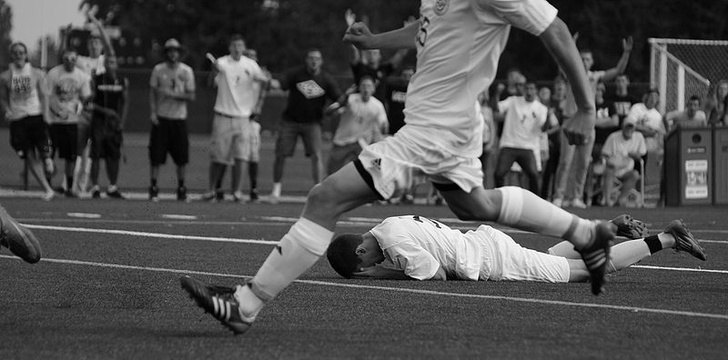
There have been some amusing yet painful freak injuries over the years. In 2015, for example, West Ham’s Enner Valencia stepped on a broken cup and sliced his toe open, needing stitches that stopped him from being able to stand on his foot properly.
A similar injury befall the Spanish goalkeeper Santiago Canizares at the 2002 World Cup. Having been dropped from the goalkeeping position in the 1990s the ageing shot-stopped was called up by his international side only to drop an aftershave bottle and sever a tendon in his toe. The same thing that happened to Dave Beasant when he dropped a bottle of salad cream in his kitchen and tried to control it with his foot.
Former Manchester United defender Rio Ferdinand strained a tendon in his knee when he was at Leeds United. How did he manage to do that, you might wonder. Getting tackled? Landing awkwardly? No, he had his leg up on the coffee table for too long whilst playing video games…
Darius Vassell will not go down in history as one of football’s brighter sparks. The forward once attempted to rid himself of a blood blister in his toe by using a power drill. He may have gotten rid of the blood, but he nearly lost his toe in the process. Still, at least that wasn’t as bad as Adam Chapman who failed to screw the lid back on to his baby’s bottle properly and burnt his nipple with the milk when he was shaking it.
The last one of these we’ll share is not for the faint-hearted. Paulo Diogo got a little over-excited after he assisted his teammate scoring in a match. He intended to jump into the crowd and celebrate with his side’s supporters but as he did so he caught his wedding ring in some metal fencing and tore off half of his finger. There’s no warm-up you can do that will sort that out…
High Profile Injuries
What are some of football’s most high-profile injuries? Well we’re talking about a game that began in the middle of the 19th century, so it’s fair to say there have been a few of the years. Here are just three that spring to mind from the modern era:
Alan Smith

In February of 2006 Manchester United travelled to Anfield to play their fiercest rivals Liverpool in an FA Cup game.
Towards the end of the match the home side lined up a free-kick which John Arne Riise struck fiercely. United’s Alan Smith jumped to block but landed awkwardly, breaking his leg and dislocating his ankle as he did so.
The Anfield crowd noted the seriousness of the situation and gave the player an unlikely standing ovation as he left the pitch. He was unable to play again for seven months.
Petr Cech

In the same year as Alan Smith’s injury, Chelsea goalkeeper Petr Cech was involved in a collision that nearly took his life. He raced out to meet a ball played forward for Reading’s Stephen Hunt to chase in front of the Madjeski Stadium crowd.
Cech got down low and gathered the ball up but as he did so Hunt’s knee or possibly his shin connected with the ‘keeper’s head. It fractured his skull and he needed emergency surgery to survive.
Incredibly, despite some saying he might never play again, the shot-stopper played for the Blues again just three months later. He wore protective headgear for the rest of his career.
Alf Inge Haaland
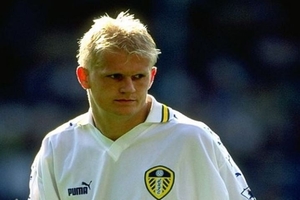
During a Manchester derby in 2001, Manchester United’s Roy Keane jumped into a knee-high tackle on City’s Alf Inge Haaland.
Years later he would reveal that it was a pre-meditated tackle intended to do serious damage because the City player had accused him of faking an injury after a tackle when Haaland had played for Leeds some years before.
The Norwegian attempted to play again but was forced to retire from football in 2003, but got his own back by fathering one of the most powerful forwards in Premier League history, Erling Haaland, and then getting him to sign for Manchester City.
